Upcoming book/DVD signing
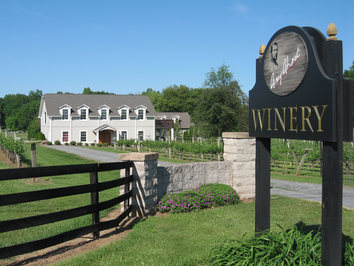 UPDATE: I just accepted an invitation to make my third appearance at Gray Ghost Winery’s annual “Civil War Authors Day.” This year I will be signing 2 books and 1 DVD. I am also presenting a brief talk on Richard Kirkland as part of their author vignettes. This FREE event is on Saturday, November 19, 2011 from 11:00 am to 5:00 pm. I will repost a list of all participating authors once they are officially announced at www.grayghostvineyards.com.
UPDATE: I just accepted an invitation to make my third appearance at Gray Ghost Winery’s annual “Civil War Authors Day.” This year I will be signing 2 books and 1 DVD. I am also presenting a brief talk on Richard Kirkland as part of their author vignettes. This FREE event is on Saturday, November 19, 2011 from 11:00 am to 5:00 pm. I will repost a list of all participating authors once they are officially announced at www.grayghostvineyards.com.
Posted by ny5/pinstripepress
at 8:30 AM EDT
Updated: Thursday, 15 September 2011 8:35 AM EDT
Permalink |
Share This Post
Collateral Damage
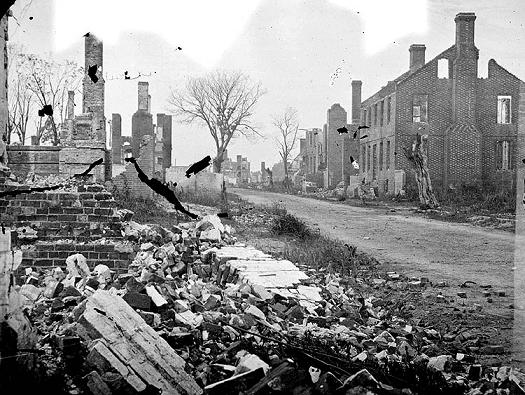
Last week I posted some excerpts from the U.S. Government’s 1904-1905 damage claim investigation into two of Fredericksburg’s historic churches. In both interviews, the wartime carnage that was inflicted on each structure at the hands of the Federal army was recounted by residents who witnessed the abuse firsthand. In retrospect, these churches were actually the lucky ones as they were at least left standing. This was due to their usefulness as headquarters, stables and hospitals. The fact that they survived the Civil War with all four walls and a roof intact is remarkable, especially when they stood at ground zero for the first recorded artillery shelling of an American city. Many of the buildings in the blocks surrounding these churches were either demolished by shot and shell, or burned to the ground. Our friends from the NMPS over at the Mysteries and Conundrums blog have posted some excellent photos and insights on the resulting damage from the Battle of Fredericksburg.
As I was prepping some additional material for my wheelchair tour business I came upon several interesting passages in Francis Augustín O'Reilly’s book The Fredericksburg Campaign: Winter War on the Rappahannock. This is my favorite book on the Battle of Fredericksburg and it is serving as a major source for my tour guide’s commentary. One section in particular from the chapter titled “A Scene of Wildest Confusion” struck me. Although the civilian recollections and post-battle photography lead one to believe that the Union’s artillery successfully wreaked havoc on the town, it appears that 100+ guns did little to accomplish their tactical goals. This inevitably allowed Confederate General William Barksdale’s small contingent of troops to hold off the attacking Federals who were attempting to cross the Rappahannock River. Here are some excerpts from Frank’s book that present the Union troop’s perspective on the artillery attack:
Colonel Charles Tompkin’s Federal artillery responded to the Confederates at both the upper and middle pontoon crossings. An artillerist recalled that the guns answered at once with “a most tremendous cannonade upon the city.” Several batteries opened on the buildings where they had spotted Confederate fire. Tompkins coached his batteries to fire in short bursts-three to six shots per gun-and then allow the smoke to dissipate so they could judge the effect. …Hunt’s batteries intensified their effort between 9:30 and 10:00 a.m. A soldier in Seeley’s battery wrote, “We could see the boards and brick fly as the shells went dashing through the buildings which soon began to present a sorry look.” Confederate General Barksdale sent a detachment of the 21st Mississippi to the river, but Miller’s Union battery shredded it before it reached the foot of William Street. A Second Corps staff officer recounted, “It was a magnificent sight to see the bombardment of the sleepy old town, and we expected to see it quickly reduced to ashes.” “Oh! It was terrific!” rejoiced a man in the 50th New York Engineers. “From the time the fire opened until about 11 a.m., it was one continuous roar.” One soldier called the barrage “a spectacle never, never to be forgotten,” and “believed that every shot told.” An infantryman at the upper crossing said, “It was great amusement to us to watch a solid shot tear through a building, beat down a wall, topple over a chimney or root out a nest of sharpshooters.” Each explosion reverberated with an intensity that startled even the Federals. A New Yorker recalled, “The 11th was a day of bombardment such as even soldiers rarely see.” But Tompkins’ gunners lacked the wherewithal to drive the Confederates away. …Some Union commanders became critical as the artillery “did not appear to do much good.” …A member of Zook’s brigade wrote bitterly, “Thursday was spent wasting ammunition from about 100 guns.” …Impatient engineers grumbled, “Our artillery were very inefficient or they could have blown the buildings that sheltered the devils to atoms.”
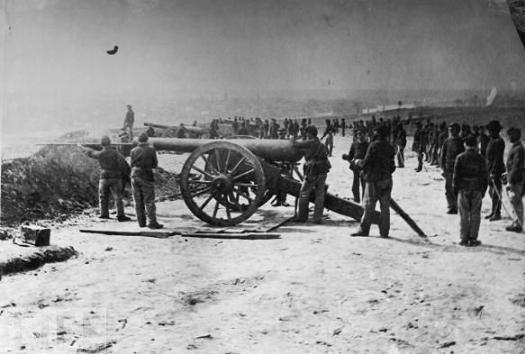
According to the Fredericksburg/Spotsylvania National Military Park website, the results of the Federal Army’s massive bombardment did not produce the anticipated results:
Burnside now turned to his artillery chief, Brigadier General Henry J. Hunt, and ordered him to blast Fredericksburg into submission with some 150 guns trained on the city from Stafford Heights. Such a barrage would surely dislodge the Confederate infantry and permit completion of the bridges. Shortly after noon, Hunt gave the signal to commence fire. "Rapidly the huge guns vomited forth their terrible shot and shell into every corner and thoroughfare of [Fredericksburg]," remembered an eyewitness. The bombardment continued for nearly two hours, during which 8,000 projectiles rained destruction on Fredericksburg. Then the grand cannonade ceased and the engineers ventured warily to the ends of their unfinished bridges. Suddenly -impossibly - muzzles flashed again from the cobble-strewn streets and more pontoniers tumbled into the cold waters of the Rappahannock.
Without a doubt the civilians of Fredericksburg suffered greatly due to the Battle of Fredericksburg (as well as the three other battles that took place in the region: Chancellorsville, Spotsylvania and The Wilderness). In a piece titled Voices from the Storm: Civilians Endure the Battle of Fredericksburg, Historian John Hennessy writes:
The people of Fredericksburg faced two more years of war – living life on, and sometimes beyond, the northern edge of the Confederacy. War weighed heavily, completely, on the Fredericksburg region. By war’s end, the community had been transformed, physically (more than 80 buildings destroyed – just under 10% of the city), economically (personal wealth dropped by more than 70%), and socially (thousands of slaves seized freedom). The experience left behind bitterness for white residents that took decades to heal. …Today visible scars from the war are few; only a single home in town still bears exterior battle damage.
Although this historic artillery offensive dealt a devastating blow to the skyline of the city, it did little to drive out the Confederate forces tasked with defending the town and postponing their enemy’s pontoon crossing. It would appear that as senseless as the sacrifice of soldiers would be at Marye’s Heights, an equally senseless destruction was levied upon the civilians of Fredericksburg.
Posted by ny5/pinstripepress
at 9:50 AM EDT
Updated: Wednesday, 14 September 2011 9:38 PM EDT
Permalink |
Share This Post
Ben Sakoguchi’s American Dream
Tonight's post presents a look at one modern artist’s critical interpretation of America’s Founding Fathers. Painter Ben Sakoguchi’s Orange Crate Label Series: A Brief History of Slavery boldly portrays the issue of racism in Colonial America and how it influenced the structure of our nation. In 2004, Sakoguchi began directing his focus toward the “peculiar institution” of slavery, as well as the contributions of early African-Americans by merging historic and pop-culture imagery to create these political advertisement-like collages. These striking images, both enthralling and offensive, represent the shameful aspects of America’s origins and the often neglected side of our Founder’s stories. Sakoguchi later added an additional series that takes an identical approach to the Civil War and Confederate history. (NOTE: During World War II, the artist's family was incarcerated by the U.S. government because of their Japanese ancestry. Sakoguchi spent his early childhood in an internment camp at Poston, Arizona which likely influenced his views on race in America.)
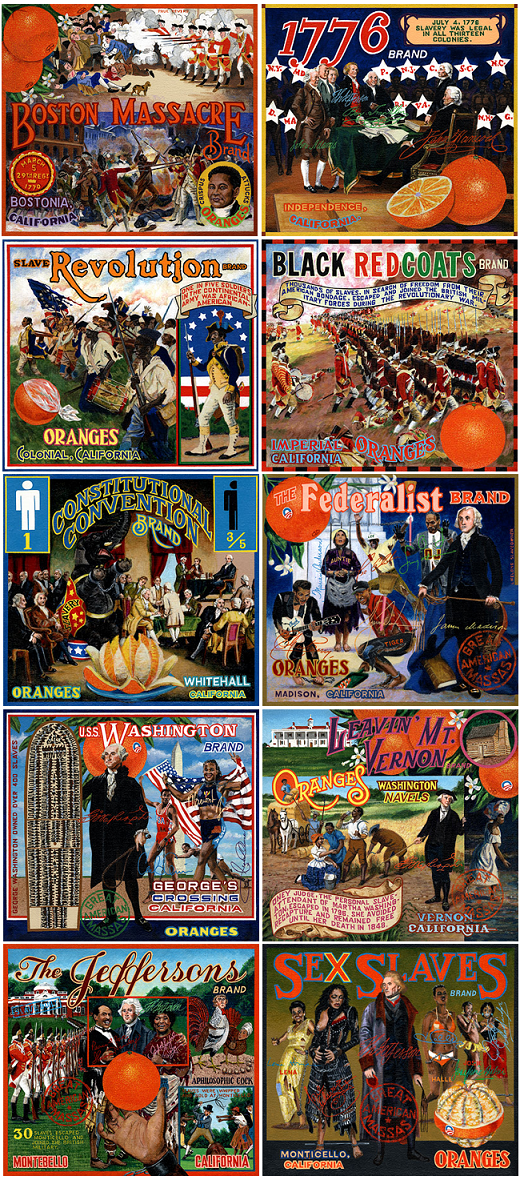
Posted by ny5/pinstripepress
at 10:53 PM EDT
Updated: Wednesday, 14 September 2011 10:07 AM EDT
Permalink |
Share This Post
The Founding Stoners?
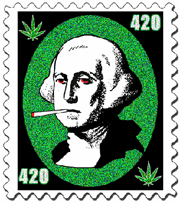 For years folks have argued over whether or not some of the Founding Fathers indulged in a little “recreational” smoke from time to time. Many of these wealthy Virginia planters (such as George Washington and Thomas Jefferson) grew Hemp on their farms, but the question remains as to what degree did their use of it go? Myths and misquotes abound. Proponents for the legalization of marijuana often reference these cloudy facts in support of their cause, while the anti-drug crowd vehemently disagrees with the notion. In his book Hemp: Lifeline to the Future (Chapter 16, A World of Cannabis Cultures) Chris Conrad outlines this mystery. He writes:
For years folks have argued over whether or not some of the Founding Fathers indulged in a little “recreational” smoke from time to time. Many of these wealthy Virginia planters (such as George Washington and Thomas Jefferson) grew Hemp on their farms, but the question remains as to what degree did their use of it go? Myths and misquotes abound. Proponents for the legalization of marijuana often reference these cloudy facts in support of their cause, while the anti-drug crowd vehemently disagrees with the notion. In his book Hemp: Lifeline to the Future (Chapter 16, A World of Cannabis Cultures) Chris Conrad outlines this mystery. He writes:
The extent of cannabis smoking during the Colonial era is still subject to debate. President George Washington wrote a letter that contained an oblique reference to what may have been hashish. “The artificial preparation of hemp, from Silesia, is really a curiosity.” Washington made specific written references to Indian hemp, or cannabis indica, and hoped to “have disseminated the seed to others.” His August 7, 1765 diary entry, “began to separate the male from the female (hemp) plants,” describes a harvesting technique favored to enhance the potency of smoking cannabis, among other reasons. Hemp farmer Thomas Jefferson and paper maker Ben Franklin were ambassadors to France during the initial surge of the hashish vogue. Their celebrity status and progressive revolutionary image afforded them ample opportunities to try new experiences. Jefferson smuggled Chinese hemp seeds to America and is credited with the phrase in the Declaration of Independence, “Life, liberty and the pursuit of happiness.”
Did the Founding Fathers of the United States of America smoke cannabis? Some researchers think so. Dr. Burke, president of the American Historical Reference Society and a consultant for the Smithsonian Institute, counted seven early presidents as cannabis smokers: George Washington, Thomas Jefferson, James Madison, James Monroe, Andrew Jackson, Zachary Taylor and Franklin Pierce. “Early letters from our founding fathers refer to the pleasures of hemp smoking,” said Burke. Pierce, Taylor and Jackson, all military men, smoked it with their troops. Cannabis was twice as popular among American soldiers in the Mexican War as in Vietnam: Pierce wrote to his family that it was “about the only good thing” about that war.
So what do we know? Let’s start by dispelling some myths. Yes, both Washington and Jefferson grew and wrote about Hemp, but why? There is an entire Hemp page on the Thomas Jefferson Foundation’s website that answers this question (Read Here). According to them, Hemp, along with flax and cotton, was primarily used for making clothing at Monticello. Slave garments for example, were often constructed from Hemp. Rope was also made from its extremely strong fibers. The TJ Foundation also addresses the often quoted and entirely unproven statement attributed to Jefferson, “Some of my finest hours have been spent on my back veranda, smoking hemp and observing as far as my eye can see.” According to them:
This statement has not been found in any of the writings of Thomas Jefferson. It appears to be of extremely recent vintage, and does not appear in any secondary print sources available online. Thomas Jefferson did grow hemp, but there is no evidence to suggest that Jefferson was a habitual smoker of hemp, tobacco, or any other substance. Some have pointed to a supposed reference in Jefferson's Farm Book to separating male and female hemp plants as evidence that he was cultivating it for purposes of recreational smoking; no such reference exists in Jefferson's Farm Book or any other document, although George Washington did record such a thing in his own diary: “Began to seperate the Male from the Female hemp at Do.&—rather too late.” The editorial note accompanying this comment cites Bernard McMahon's American Gardener’s Calendar: “This may arise from their [the male] being coarser, and the stalks larger.
[I do applaud the stoner who came up with that quote and managed to propagate it to the point it had to be officially addressed.] Similarly, Jefferson’s friend George Washington is also frequently quoted by the weed crowd. According to Cecil Adams for The Straight Dope:
In his diary for August 7, 1765, Washington writes, “Began to separate the Male from the Female hemp … rather too late.” Female marijuana plants are the ones that contain enough THC to be worth smoking. Some take this to mean Washington was cultivating the plant not just for fiber. Of course, two days later Washington says he put the hemp in the river to soak and separate out the fibers, and later in September that he started to harvest the seed. That suggests he divided the plants because the males made stronger fiber while the female plants produced the seed needed for the next year's crop. Jefferson in his Farm Book wrote that a female plant would produce a quart of seed, and a bushel of seed was enough to plant an acre.
We can prove that Washington was indeed a farmer of cannabis-crops, as he enthusiastically grew Hemp and promoted its growth. In 1794 he wrote a note to his gardener at Mount Vernon stating, “Make the most of the Indian hemp seed, and sow it everywhere!” (The Writings of George Washington, Volume 33, page 270). However, in the 1790s, the crop was grown mainly for its industrial value and for soil stabilization. It was many years later that the recreational and illegal use of marijuana became popular. Therefore, the Father of our Country probably did not partake.
So what can we prove? Yes, George Washington and Thomas Jefferson were growers, but they do not appear to have ever indulged in their crops. Most accounts and quotes that allegedly support this claim are either incorrect or completely fabricated. We do know for a fact that Ben Franklin used opiates as a pain killer, more specifically, a laudanum opium in alcohol extract-to alleviate the pain of kidney stones during the last few years of his life.
We also know that several American presidents have admitted to using drugs either recreationally in their youth, or medicinally in their final years. This includes Franklin Pierce (Hashish), Ulysses S. Grant (Cocaine), John F. Kennedy (Prescriptions), Bill Clinton (Marijuana), George Bush (Cocaine) and our current Commander and Chief Barak Obama (Marijuana). None of these men are said to have abused drugs while in office. Still, it is the Founding Fathers who seem to be the most desirable examples when arguing for the legalization of marijuana in America.
Too bad the history behind their drug use is bogus. This should not surprise us as the propagation of historical BS is nothing new. The Founders are constantly being hijacked in support of either Right or Left political ideology. More often than not, the reasons for doing so are fraught with false claims and misinformation. These brilliant men were by no means perfect people and I have spent plenty of words taking them to task for their faults and indiscretions. That said, their implied recreational drug use is founded on little or no evidence. So although we might like to envision a more mellow Mr. Jefferson, kicking back on the porch at Monticello and firing up a big fatty, there are absolutely no reliable sources to prove this.
I would point that out to the stoner crowd, but they would probably forget. :)
KJV turns 400
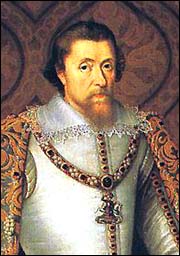 This year marks the 400th anniversary of The King James Bible. This version, also known as the Authorized Version of the Bible, is an English translation of the Christian Bible first published in 1611. The New Testament was translated from the Textus Receptus (Received Text) edition of the Greek texts, so called because most extant texts of the time were in agreement with it. The Old Testament was translated from the Masoretic Hebrew text. The King James Version has had a profound impact on English literature. The works of famous authors such as John Milton, Herman Melville, John Dryden and William Wordsworth are replete with inspiration derived from it. (I only quote from the KJV in my own published works.) Although it is often referred to as the KJV (King James Version), particularly in the United States, the only active part King James took in the translation was lifting the death penalty attached to its translation and setting very reasonable guidelines for the translation process, such as prohibiting partisan scholarship and footnotes. Current printings of the King James Bible are based on an edition published at the University of Oxford in 1769, edited by Benjamin Blayney, and contain substantially the same text; however, there are a few differences between the 1769 and the 1611 versions.
This year marks the 400th anniversary of The King James Bible. This version, also known as the Authorized Version of the Bible, is an English translation of the Christian Bible first published in 1611. The New Testament was translated from the Textus Receptus (Received Text) edition of the Greek texts, so called because most extant texts of the time were in agreement with it. The Old Testament was translated from the Masoretic Hebrew text. The King James Version has had a profound impact on English literature. The works of famous authors such as John Milton, Herman Melville, John Dryden and William Wordsworth are replete with inspiration derived from it. (I only quote from the KJV in my own published works.) Although it is often referred to as the KJV (King James Version), particularly in the United States, the only active part King James took in the translation was lifting the death penalty attached to its translation and setting very reasonable guidelines for the translation process, such as prohibiting partisan scholarship and footnotes. Current printings of the King James Bible are based on an edition published at the University of Oxford in 1769, edited by Benjamin Blayney, and contain substantially the same text; however, there are a few differences between the 1769 and the 1611 versions. Participating churches here in the Fredericksburg, VA area will divvy up all 66 books to be read aloud over 12 sessions on three weekends between Sept. 16 and Oct. 2, in a commemoration similar to a Holy Week event at the Globe. Churches taking part in the marathon effort here include: Fredericksburg Seventh-day Adventist Church, Christ Episcopal Church, Fredericksburg United Methodist Church, Resurrection Lutheran Church, Tower of Deliverance Church, Fredericksburg Baptist Church, Tabernacle United Methodist Church, Shiloh Baptist Church (Old Site), Spotsylvania Presbyterian Church, Crossroads Baptist Church, Zion United Methodist Church and Ferry Farm Baptist Church. I will be participating in this marathon as a member of Spotsylvania Presbyterian Church on Saturday, October 1 (beginning at 3pm). Our KJV readings will cover the New Testament books of Acts, through 2 Corinthians. I will post a recap of the experience here.
Posted by ny5/pinstripepress
at 10:19 AM EDT
Updated: Monday, 12 September 2011 11:18 AM EDT
Permalink |
Share This Post
 UPDATE: I just accepted an invitation to make my third appearance at Gray Ghost Winery’s annual “Civil War Authors Day.” This year I will be signing 2 books and 1 DVD. I am also presenting a brief talk on Richard Kirkland as part of their author vignettes. This FREE event is on Saturday, November 19, 2011 from 11:00 am to 5:00 pm. I will repost a list of all participating authors once they are officially announced at www.grayghostvineyards.com.
UPDATE: I just accepted an invitation to make my third appearance at Gray Ghost Winery’s annual “Civil War Authors Day.” This year I will be signing 2 books and 1 DVD. I am also presenting a brief talk on Richard Kirkland as part of their author vignettes. This FREE event is on Saturday, November 19, 2011 from 11:00 am to 5:00 pm. I will repost a list of all participating authors once they are officially announced at www.grayghostvineyards.com.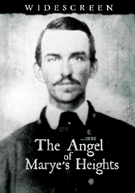
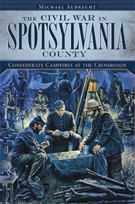
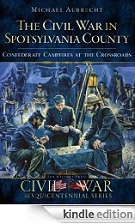

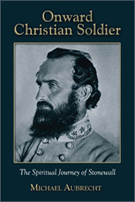




 For years folks have argued over whether or not some of the Founding Fathers indulged in a little “recreational” smoke from time to time. Many of these wealthy Virginia planters (such as George Washington and Thomas Jefferson) grew Hemp on their farms, but the question remains as to what degree did their use of it go? Myths and misquotes abound. Proponents for the legalization of marijuana often reference these cloudy facts in support of their cause, while the anti-drug crowd vehemently disagrees with the notion. In his book Hemp: Lifeline to the Future (Chapter 16, A World of Cannabis Cultures) Chris Conrad outlines this mystery. He writes:
For years folks have argued over whether or not some of the Founding Fathers indulged in a little “recreational” smoke from time to time. Many of these wealthy Virginia planters (such as George Washington and Thomas Jefferson) grew Hemp on their farms, but the question remains as to what degree did their use of it go? Myths and misquotes abound. Proponents for the legalization of marijuana often reference these cloudy facts in support of their cause, while the anti-drug crowd vehemently disagrees with the notion. In his book Hemp: Lifeline to the Future (Chapter 16, A World of Cannabis Cultures) Chris Conrad outlines this mystery. He writes:  This year marks the 400th anniversary of The King James Bible. This version, also known as the Authorized Version of the Bible, is an English translation of the Christian Bible first published in 1611. The New Testament was translated from the Textus Receptus (Received Text) edition of the Greek texts, so called because most extant texts of the time were in agreement with it. The Old Testament was translated from the Masoretic Hebrew text. The King James Version has had a profound impact on English literature. The works of famous authors such as John Milton, Herman Melville, John Dryden and William Wordsworth are replete with inspiration derived from it. (I only quote from the KJV in my own published works.) Although it is often referred to as the KJV (King James Version), particularly in the United States, the only active part King James took in the translation was lifting the death penalty attached to its translation and setting very reasonable guidelines for the translation process, such as prohibiting partisan scholarship and footnotes. Current printings of the King James Bible are based on an edition published at the University of Oxford in 1769, edited by Benjamin Blayney, and contain substantially the same text; however, there are a few differences between the 1769 and the 1611 versions.
This year marks the 400th anniversary of The King James Bible. This version, also known as the Authorized Version of the Bible, is an English translation of the Christian Bible first published in 1611. The New Testament was translated from the Textus Receptus (Received Text) edition of the Greek texts, so called because most extant texts of the time were in agreement with it. The Old Testament was translated from the Masoretic Hebrew text. The King James Version has had a profound impact on English literature. The works of famous authors such as John Milton, Herman Melville, John Dryden and William Wordsworth are replete with inspiration derived from it. (I only quote from the KJV in my own published works.) Although it is often referred to as the KJV (King James Version), particularly in the United States, the only active part King James took in the translation was lifting the death penalty attached to its translation and setting very reasonable guidelines for the translation process, such as prohibiting partisan scholarship and footnotes. Current printings of the King James Bible are based on an edition published at the University of Oxford in 1769, edited by Benjamin Blayney, and contain substantially the same text; however, there are a few differences between the 1769 and the 1611 versions.